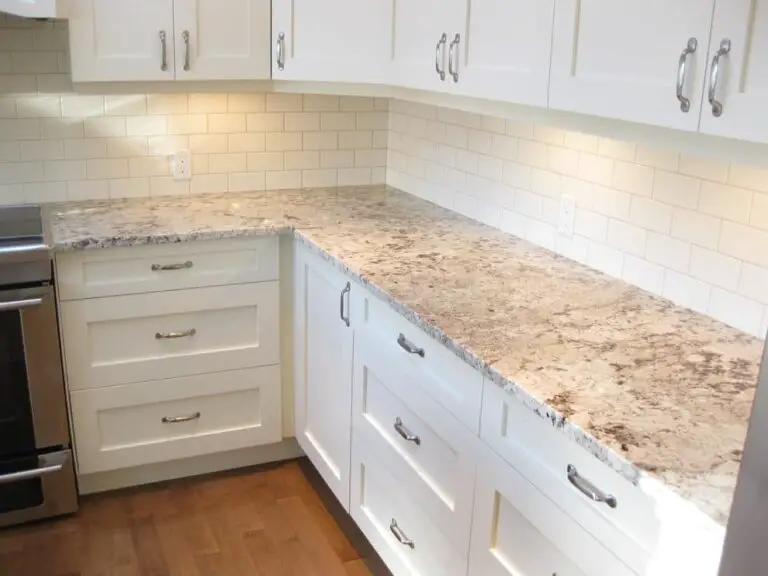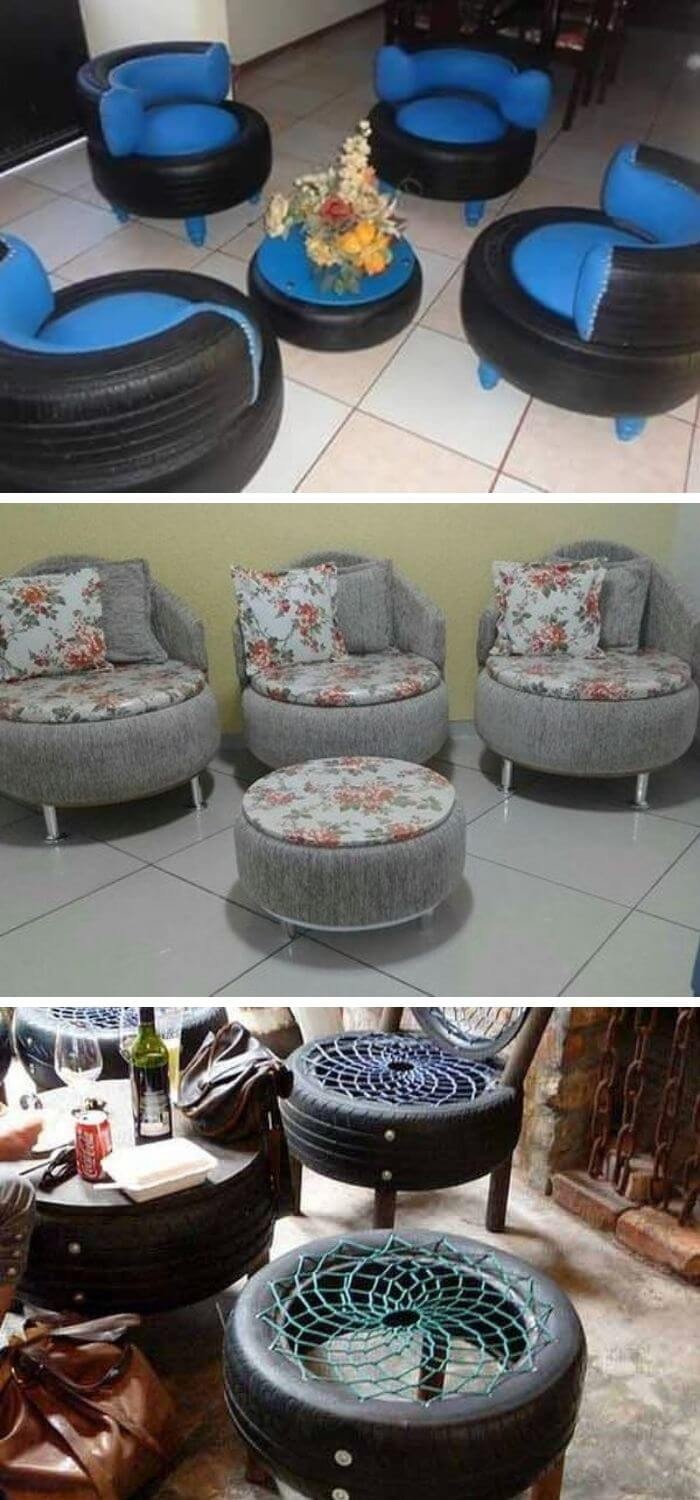15+ Cool Garden Globe Ideas
If you’re looking to give your garden a unique touch, consider incorporating garden globes into your outdoor space. These captivating shapes and colors not only add elegance but also bring life and visual interest to an otherwise dull garden. The beauty of garden globes lies in their versatility and customization options, allowing you to match them perfectly with your garden’s theme and style.
By creating your own DIY garden globes, you can ensure a one-of-a-kind outdoor space that reflects your personal taste. Whether you’re looking for mosaic tile, illuminated, or metallic designs, there are endless possibilities to explore. In this article, we’ll delve into the world of garden globes, exploring their definition and history, types, role in landscape design, and provide step-by-step DIY projects to get you started.
With a little creativity and imagination, your garden can be transformed into a stunning oasis that’s sure to impress.
Understanding Garden Globes
Garden globes occupy a distinctive niche in the realms of both history and contemporary landscape design. While often viewed as mere decorative elements, they actually embody a rich amalgamation of artistic expression, historical significance, and personal flair. As we explore what makes these enigmatic pieces so captivating, we’ll also uncover how they can revolutionize any outdoor setting.
Definition and History
Garden globes have long been a staple of garden design, serving as visual focal points that add depth and character to outdoor spaces. At their core, these spheres represent a connection to ancient cultures and traditions, where they were often seen as symbols of perfection and the mysteries of the universe. As civilizations evolved over time, so too did the role of garden globes in our collective imagination.
Today, they are prized for their timeless beauty and ability to reflect an individual’s personal style and flair, bringing a touch of elegance to even the most rustic or modern landscapes.
Types of Garden Globes
Garden globes come in an array of materials and designs, resulting in a diverse spectrum of looks and feels. Here’s a concise breakdown of the most common types: Glass-based globes offer transparency or coloration, imbuing gardens with a shiny, reflective quality that adds sparkle. Mosaic styles incorporate small pieces of glass or ceramic, yielding colorful, intricate patterns that impart a unique charm.
Metal-made globes, crafted from iron, steel, or copper, boast a durable, rustic appeal with an industrial flair. Finally, illuminated globes feature LED lights or solar-powered lamps, casting a magical glow over gardens at night, creating a captivating ambiance.
The Role in Landscape Design
Landscape design often incorporates garden globes as multifaceted elements, serving both aesthetic and functional purposes. Strategically placed among plants and pathways, these decorative pieces guide the eye, highlight specific areas, and influence the mood of the garden, fostering a sense of harmony and balance. Whether aiming for a classic, modern, or whimsical garden atmosphere, incorporating a garden globe can elevate the overall visual appeal and ambiance of the outdoor space.
By bringing in elements that reflect personal style and enhance natural beauty, garden globes transform landscape design into a true reflection of one’s taste. With their rich history, diverse styles, and versatility in design, garden globes offer limitless possibilities for personalizing and beautifying outdoor spaces.
Planning Your DIY Garden Globe Project
To successfully bring your garden globe concept to life, it’s vital to establish a clear strategy beforehand. By doing so, you’ll be able to harmonize your vision with your outdoor space’s overall aesthetic and design. To guide this process, let’s dissect the key considerations that must be taken into account. Firstly, consider the existing layout of your garden, taking note of any prominent features or focal points.
Next, think about the purpose of your garden globe – will it serve as a conversation starter, provide shade, or add a pop of color? Finally, envision how you want to integrate this new feature into your overall outdoor design. By thoroughly addressing these factors, you’ll be well-prepared to embark on your creative journey and produce a stunning garden globe that reflects your unique style.
Considerations Before Starting
When embarking on a garden globe project, it’s essential to thoughtfully consider several key factors from the outset. The initial phase is marked by careful deliberation over the following: Why does each element matter? What are the implications of neglecting one or more of these crucial considerations? Location determines visibility and impact – where will the globe catch the most eyes?
Size ensures the globe fits in its intended space, striking a balance between standing out and not overpowering. Materials affect durability and appearance, raising questions about what best complements your garden’s style. Finally, theme guides design choices, helping to establish the tone for the entire project. A well-considered approach at this stage sets the stage for a successful outcome.
Design Inspiration and Ideas
As the creative process begins, it’s time to tap into your personal style and envision the atmosphere you want to cultivate in your outdoor oasis. To spark inspiration, consider the following key elements:
Color palettes: Do you lean towards a cohesive monochrome scheme or a vibrant explosion of color?
Patterns: Geometric shapes, swirling designs, or nature-inspired motifs can add visual interest and depth.
Themes: Draw from fairy tale whimsy, celestial wonder, nautical charm, or botanical beauty to guide your material choices and design decisions.
This is your opportunity to infuse your garden with your unique personality. Don’t be afraid to combine elements that resonate with you, even if they’re unconventional – the result will be a truly one-of-a-kind outdoor space that reflects your personality.
Gathering Materials and Tools Needed for the Project
Before diving into your DIY garden globe project, take the time to gather essential materials and tools. This proactive approach can save you from frustration later down the line. Here’s a comprehensive list to get you started: adhesive for bonding, grout for filling gaps between tiles, paint for added color or protection, gloves and safety glasses for safe handling of sharp materials.
While the specific materials and tools may vary depending on your chosen globe design, prioritize quality and safety to ensure your creation stands the test of time. By carefully planning your project from the outset and gathering all necessary elements, you’ll be well on your way to crafting a truly stunning piece that adds character and charm to your garden.
Step-by-Step DIY Garden Globe Projects
Transform your outdoor space with a personalized DIY garden globe, combining creativity and horticulture in a unique way. Let’s begin our journey by crafting a stunning Mosaic Tile Garden Globe, blending artistic flair with the beauty of nature.
Project 1: Mosaic Tile Garden Globe
Before embarking on this creative journey, ensure you have all the necessary materials within reach.
Here’s what you’ll need:Materials ListSpherical Form: Base for the mosaicMosaic Tiles: Decorative elements (quantity depends on globe size and tile coverage area)Adhesive: To attach tiles to the formGrout: To fill gaps between tilesSealer: To protect the mosaic from weather and moistureGloves: For hand protection during workSponge & Cloth: For cleaning and polishing the globeOnce you have your materials, follow these steps:Prepare the Spherical Form: Thoroughly clean the surface to remove any dust or grease.
This will ensure a better adhesive bond. Plan Your Design: Lay out your tiles around the sphere to visualize the pattern or design you aim to create. Make adjustments as needed. Attach the Tiles: Apply adhesive to the back of each tile and press it onto the sphere, starting from the top and working your way down. Leave equal spaces between tiles for grout. Let It Dry: Allow the adhesive to dry completely, following the manufacturer’s recommended drying time (usually 24 hours).
Apply Grout: Once the adhesive is dry, apply grout over the tiles, filling gaps thoroughly. Use a glove or grout float to push grout into spaces. Be cautious not to remove excess grout between tiles. Clean the Surface: After applying grout, wait 10 minutes and then gently wipe the surface with a damp sponge to remove excess grout. Final Cleaning: Once grout has fully set (usually after 24 hours), polish tiles with a dry cloth to remove any haze left by grout.
Seal the globe: Apply sealer to grout and tiles to protect from weather and moisture, following manufacturer’s instructions for best results. Tips for Grouting and SealingChoose the Right Grout Color: Select a grout color that complements your tiles to enhance overall appearance of garden globe. Apply Sealer Correctly: Ensure grout is completely dry before applying sealer. Use small brush for precise application, and reapply annually for lasting protection.
Work in Sections: If globe is large, consider working in sections to manage drying times better, ensuring each part receives attention. By following these steps and tips, you’ll create a stunning mosaic tile garden globe that reflects your style and adds unique charm to your garden. This project not only enhances your outdoor space but also offers a satisfying sense of accomplishment.
Project 2: Illuminated Garden Globe
To create an enchanting illuminated garden globe, combine beauty with functionality by crafting a warm and inviting atmosphere in your outdoor space after dark. This DIY project requires specific materials to ensure safety, durability, and eco-friendliness. Start by gathering the necessary materials: a waterproof globe shell, solar lights (1-2 units), waterproof adhesive, sealant, and a drill (optional).
The choice of solar lights eliminates the need for electrical cords, making this project both environmentally friendly and safe. To assemble the globe, follow these steps:Prepare the Globe: If your globe shell is not pre-drilled, carefully create a hole for the solar light’s stake. This will provide a secure fit. Install Solar Lights: Insert the solar light into the globe, securing it with waterproof adhesive if necessary. Ensure the solar panel faces up to receive sunlight.
Seal the Globe: Apply sealant around the edges where the light meets the globe to prevent water from entering and ensure durability. Test the Light: Place the globe in sunlight to charge for a few hours, then check its illumination after dark. Adjust the solar panel’s angle if necessary for optimal light absorption. Final Placement: Once you’re satisfied with the lighting, place your globe in your desired location, considering ample sunlight during the day and optimal light display at night.
Remember to prioritize safety and functionality:Safety First: Use materials designed for outdoor use to ensure longevity and safety. Light Placement: Carefully consider the solar panel’s placement, ensuring direct sunlight for effective charging. Regular Maintenance: Clean the solar panel regularly to maintain its efficiency, as dust and dirt can significantly reduce it.
Waterproofing: Ensure every part of the globe that could be exposed to water is sealed properly to prevent damage and ensure safety. By following these steps, you’ll create a beautiful and functional illuminated garden globe that not only enhances your outdoor space’s ambiance but also provides a practical light source. This perfect blend of aesthetics and functionality will bring a cozy atmosphere to your garden, enjoyed by you and your visitors alike.
Project 3: Metallic Garden Globe
Crafting a metallic garden globe offers a unique opportunity to infuse a touch of modernity into your outdoor space while promoting eco-friendliness and cost-effectiveness. To bring this project to life, you’ll need the right materials.
Here’s what’s required:
Materials:
* Old bowling ball or spherical form: serves as the foundation for the globe;
* Metal sheets or strips: needed to cover the sphere;
* Metal primer: ensures a smooth surface for painting;
* Metal paint: adds color and protection;
* Sealant: prevents rust and enhances durability;
* Adhesive: attaches metal pieces to the sphere.
To begin, prepare your base by cleaning the bowling ball or spherical form.
This step is crucial in ensuring a strong bond between the adhesive and paint. Next, attach the metal sheets or strips using adhesive, overlapping them slightly for complete coverage.
After the adhesive has dried, apply a coat of metal primer to the entire surface. This step prevents rust and ensures that the paint adheres properly. Once the primer has dried, you can start painting your globe using your chosen color of metal paint.
For optimal results, apply two or more thin coats, allowing each coat to dry before applying the next.
Finally, seal your globe with a clear sealant suitable for outdoor use and designed for metal. This step protects it from the elements and prevents rust.
To maintain your globe’s appearance and durability, perform regular maintenance by inspecting it periodically for signs of wear or rust. Touch up paint and sealant as needed to ensure its longevity.
Additionally, place your globe in a location where it can be admired without being exposed to heavy rain or strong winds. By choosing high-quality materials designed for metal and outdoor use, you’ll significantly extend the life of your metallic garden globe.
DIY Concrete Garden Orbs
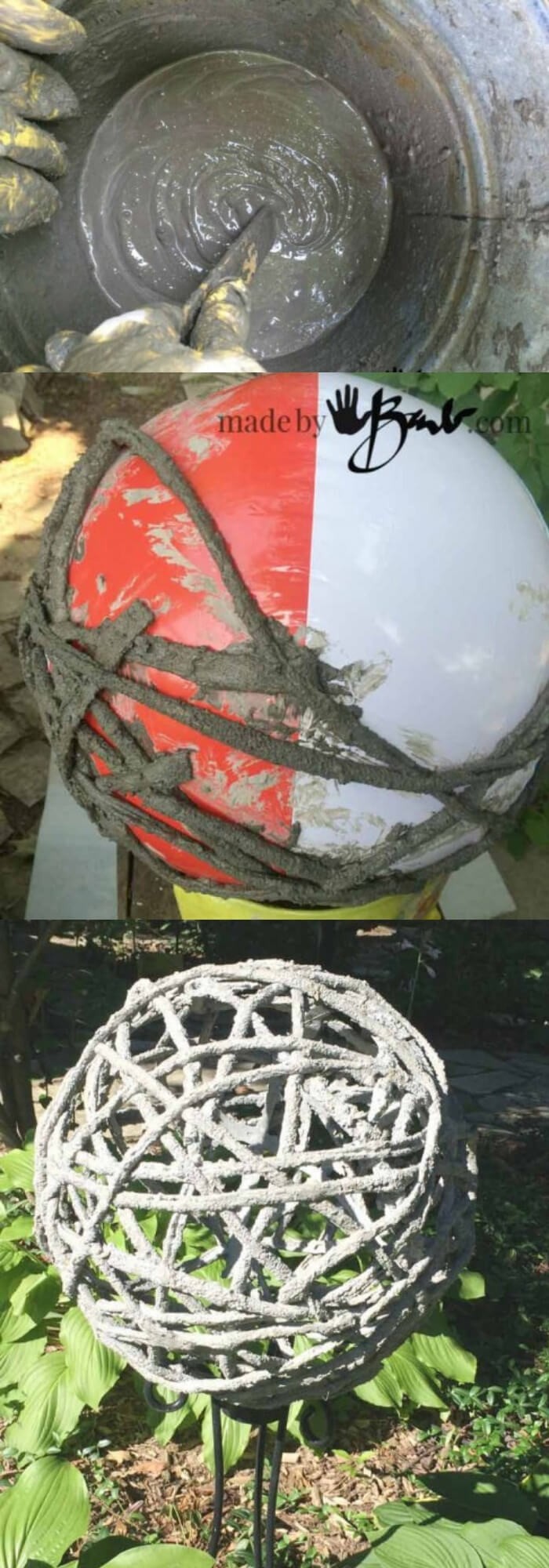
Concrete Garden Orbs, a creative endeavour presented by madebybarb. com, revolves around crafting durable and visually appealing decorative elements using the versatile material of concrete. The project’s simplicity and flexibility make it accessible to anyone looking to enhance their outdoor space with functional art. Barb, the creator, shares a comprehensive guide on how to create these orbs, showcasing her passion for DIY crafts that allow individuals to personalize their garden.
By following her detailed instructions and insights, visitors can experience the satisfaction of creating something beautiful and unique for their outdoor oasis.
DIY Concrete garden spheres

Garden Party Mosaic Mirror Ball
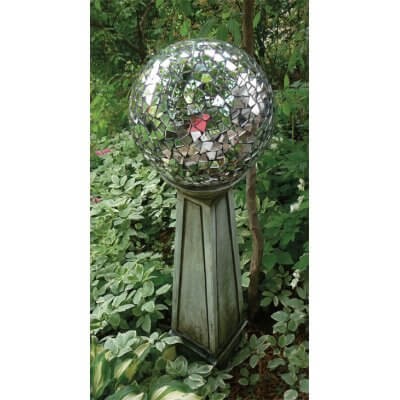
Garden Symmetrical Spheres from River Stones

A Penny Ball

Wood spheres
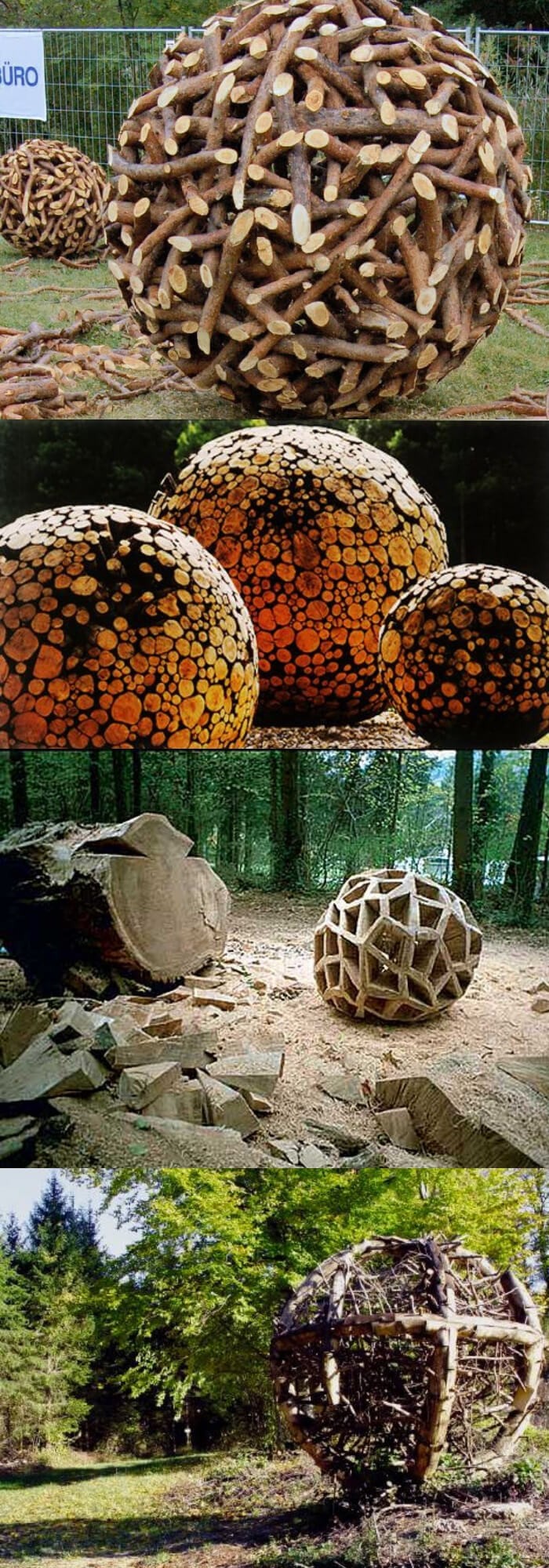
DIY Terracotta Garden Art
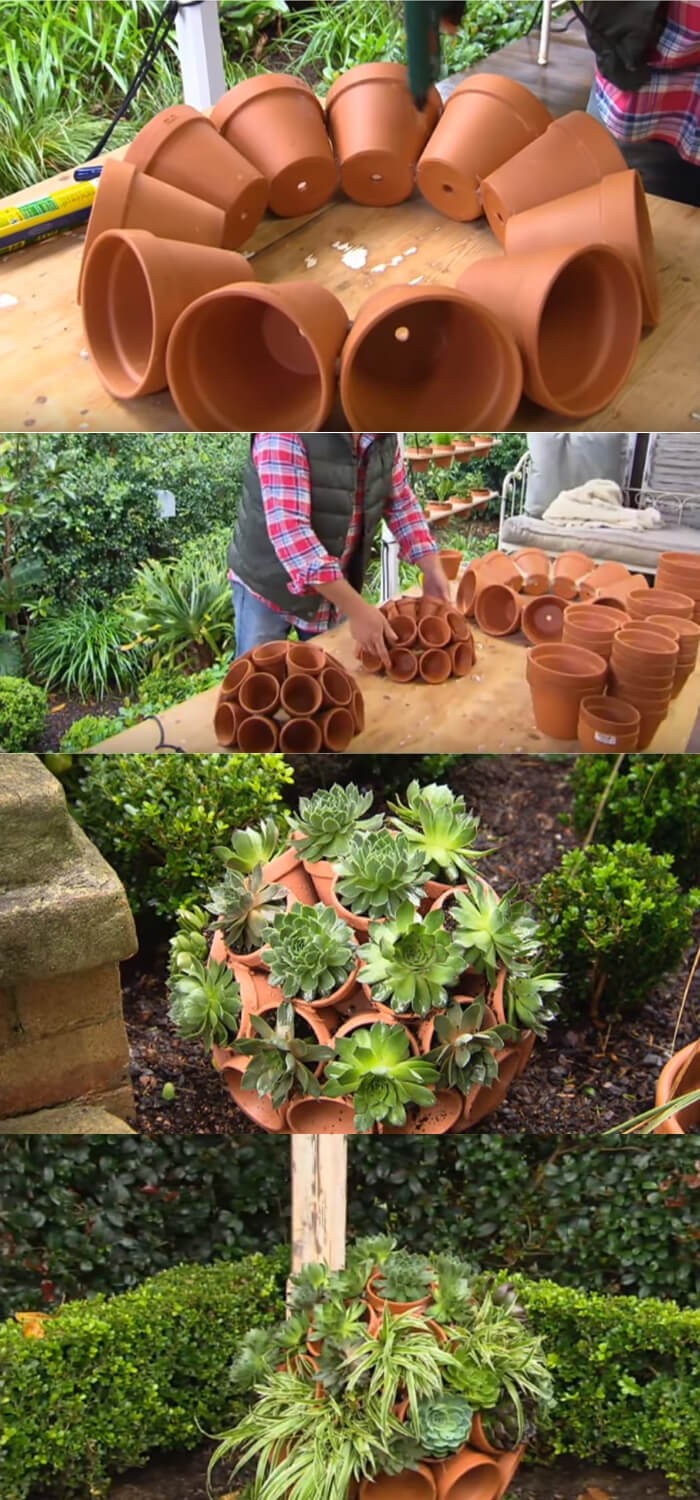
DIY Topiary

DIY Gabion Globes

Giant concrete balls

Grapevine Balls

Black Stone Outdoor Spheres with Stainless Steel

Metal Garden Balls Spheres
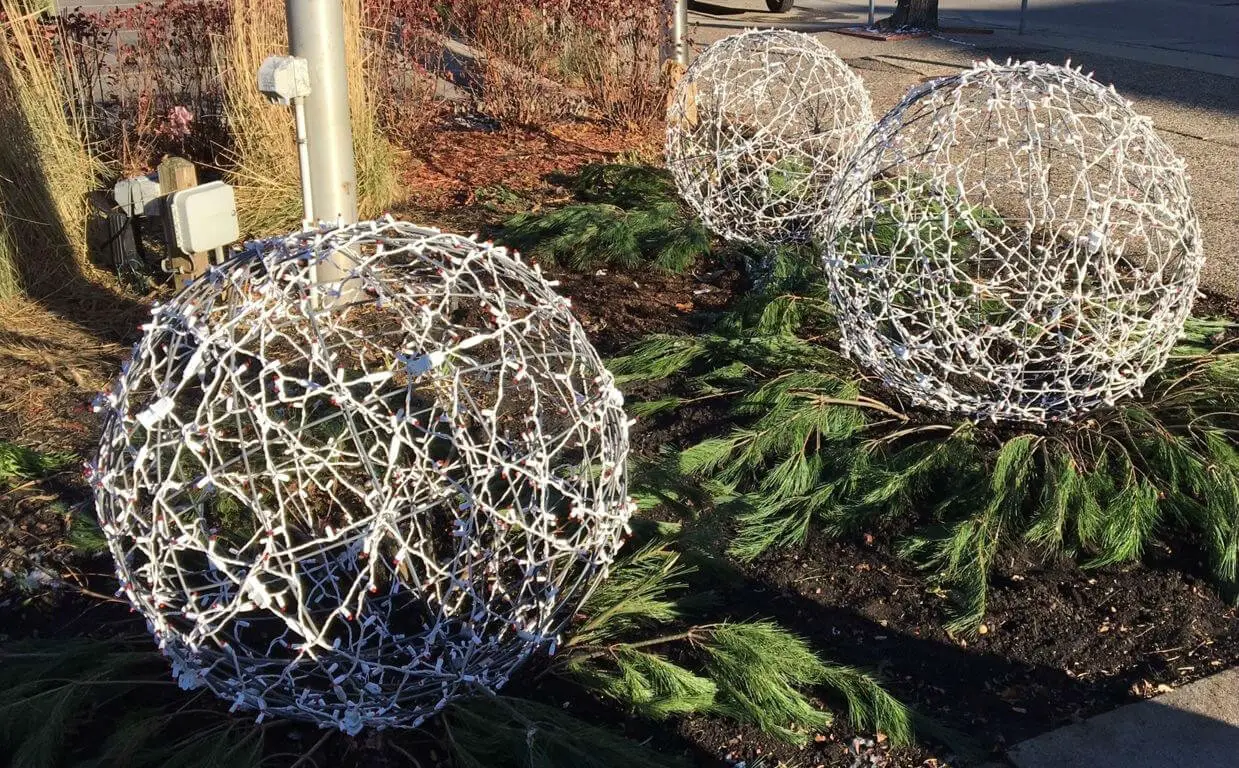
Giant Wooden Spheres

Giant Allium Chicken Wire Flowers

Customizing Your Garden Globe
Transforming a garden globe from a humble accent piece to a showstopping focal point is as easy as tailoring it to your personal style or garden theme. To do so, simply follow these insightful tips and innovative ideas that will have your globe standing out in the best possible light.
Ideas for Personalizing Garden Globes
Transforming your garden globe into a true reflection of yourself or your outdoor oasis requires thoughtful personalization. Here are some techniques to consider: Engraving names, dates, or patterns imbues the globe with a sense of history and commemoration, making it a treasured keepsake. For added visual interest, try applying freehand designs or stencils that echo the garden’s color scheme or theme.
Alternatively, select paint colors that harmonize with your garden’s palette or adjust to seasonal changes. By incorporating these elements, you can create a one-of-a-kind focal point that showcases your personality and enhances the overall aesthetic of your outdoor space.
Incorporating Garden Globes into Different Garden Styles
Garden globes seamlessly blend into any outdoor setting, elevating the space’s visual appeal and ambiance. Here’s how you can thoughtfully integrate them into various garden styles:To enhance a modern garden, incorporate sleek and minimalist designs with neutral hues that mirror its understated aesthetic. Rustic gardens, on the other hand, benefit from globes crafted with natural materials or textures that harmonize with the earthy atmosphere.
For whimsical fairy gardens, small, vibrantly colored globes with an air of magic can transport visitors to a fantastical realm.
Seasonal and Themed Decoration Tips
Transforming your garden globe into a dynamic reflection of the season or occasion is an effortless way to keep it fresh and engaging. By incorporating seasonal colors, patterns, and decorations, you can create a unique and personalized piece that not only complements your garden’s theme but also reflects your personal style. For spring, consider adding floral patterns or wrapping the globe in soft pastel hues to symbolize new life and renewal.
As Halloween approaches, transform your globe into a spooky spectacle with eerie lights and temporary face designs. During Christmas, dress up your globe in traditional red and green colors, paired with snowflake patterns and ribbons for a festive touch. By embracing the changing seasons and special occasions, you can turn your garden globe into an integral part of your outdoor space’s charm.
With a dash of creativity and some effort, your customized globe will become a treasured addition to your garden’s landscape, reflecting not only the time of year but also your personality.
Installation and Maintenance
To get the most out of your garden globes, it’s crucial to ensure a proper installation and regular maintenance routine. By following these simple yet effective tips, you’ll be able to elevate the visual appeal of your garden ornaments while also prolonging their lifespan across different seasons.
Advice on Positioning Garden Globes for Optimal Impact
When it comes to positioning your garden globe, thoughtfulness is key to maximizing its visual impact and creating a welcoming ambiance in your outdoor space. To start, consider the visibility factor. Place the globe at eye level or create a clear line of sight to ensure it captures attention and becomes a focal point. For illuminated globes, take advantage of natural light by placing them in sunny areas during the day, and then let artificial garden lights do their magic in the evening.
Another consideration is the surroundings. Position your globe near complementary features like vibrant flowers or reflective surfaces to amplify its beauty and harmonize with the rest of your garden.
Maintenance Tips to Ensure Longevity
To ensure the long-term beauty and integrity of your garden globe, it’s essential to perform regular maintenance tasks. This includes cleaning, inspecting, and storing your globe properly. Here are some frequency-based guidelines to keep in mind:
Cleaning is vital to remove dirt and prevent staining. Perform this task as needed or at least once a month using mild soap and water. This will help maintain the vibrant appearance of your globe.
Inspection is another crucial step to identify any signs of wear, such as cracks or fading, and address them promptly to prevent further damage. Conduct this task bi-annually, ideally in spring and fall.
If you reside in an area prone to harsh winters, take extra precautions by storing your globe in a protected location or indoors before the first frost to protect it from freezing temperatures.
Troubleshooting Common Issues
While garden globes are designed to withstand the elements, they’re not immune to common issues like cracking or fading. Fortunately, these problems can be addressed with the right solutions. Temperature fluctuations and impacts can cause minor cracks, which can be repaired using a strong adhesive specifically formulated for the globe’s material. This will prevent further damage and ensure your globe remains intact.
Prolonged exposure to direct sunlight is another common issue that can lead to fading. To combat this, apply a UV-resistant sealant or give your globe a fresh coat of paint designed for outdoor use. By taking these simple steps, you can extend the life of your garden globe and keep it looking its best. With proper installation and maintenance, your garden globe will remain a cherished feature of your landscape for many years to come.
Conclusion
As you reflect on the world of garden globes, it’s clear that they transcend mere decoration, instead embodying a fusion of imagination and aesthetics in our outdoor sanctuaries. Beyond their functional purpose, these whimsical accents become a reflection of our individuality and affection for the natural world. Embarking on a DIY adventure to create your own garden globe is an odyssey of creative expression, replete with opportunities to inject personal flair into every step.
From selecting designs to sourcing materials, this journey invites you to leave your mark and bring a touch of uniqueness to your garden’s landscape. We encourage you to dive headfirst into the diverse array of design options and materials at your disposal – be it glass, mosaic, metal, or even illuminated globes – each boasting its own distinct allure.
By blending and juxtaposing different elements, you can craft something truly one-of-a-kind that not only showcases your creative prowess but also elevates the ambiance of your outdoor space. The sense of accomplishment that comes with completing a DIY garden globe project is unparalleled, extending far beyond the finished product to encompass the lessons learned, obstacles overcome, and sheer elation of witnessing your vision take shape in your very own garden.
Allow your garden globe to serve as a testament to your innovative spirit and fervor for enhancing your outdoor oasis.

